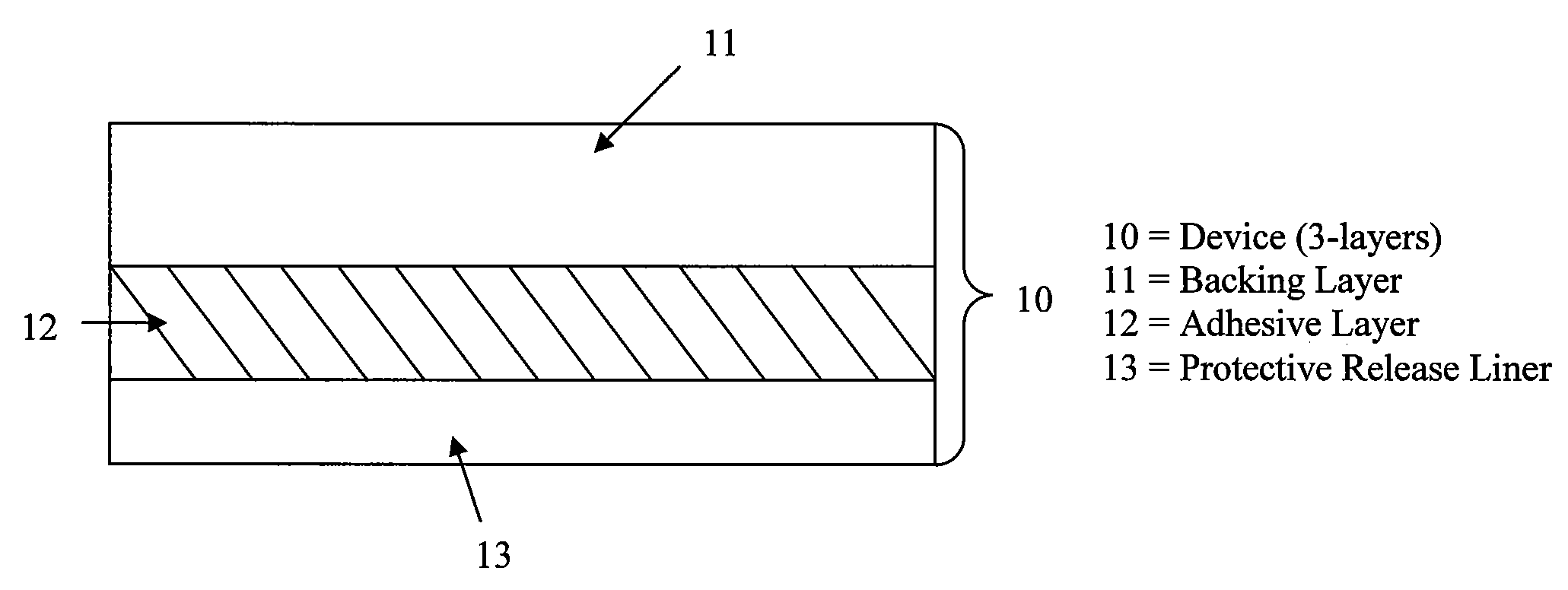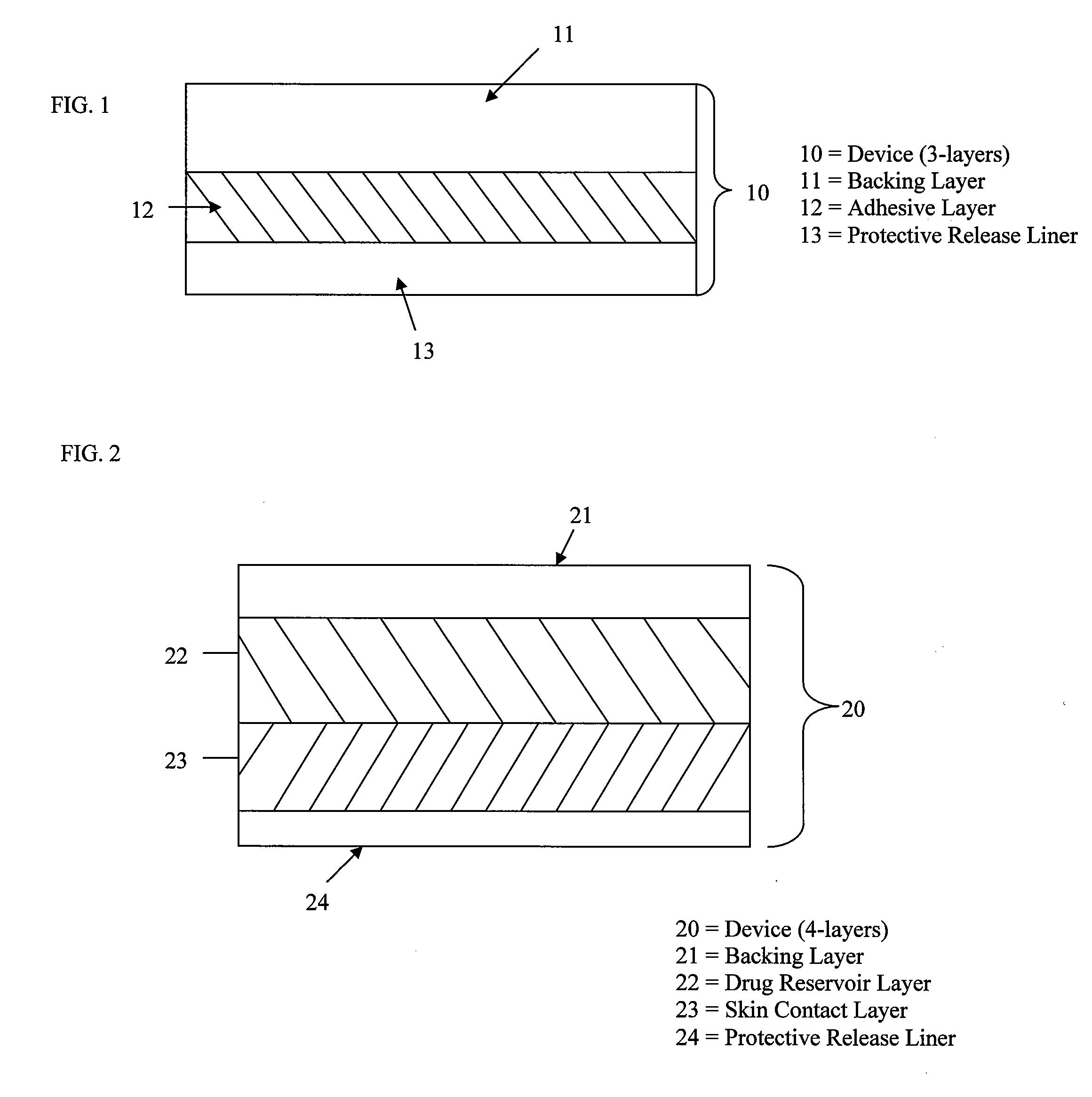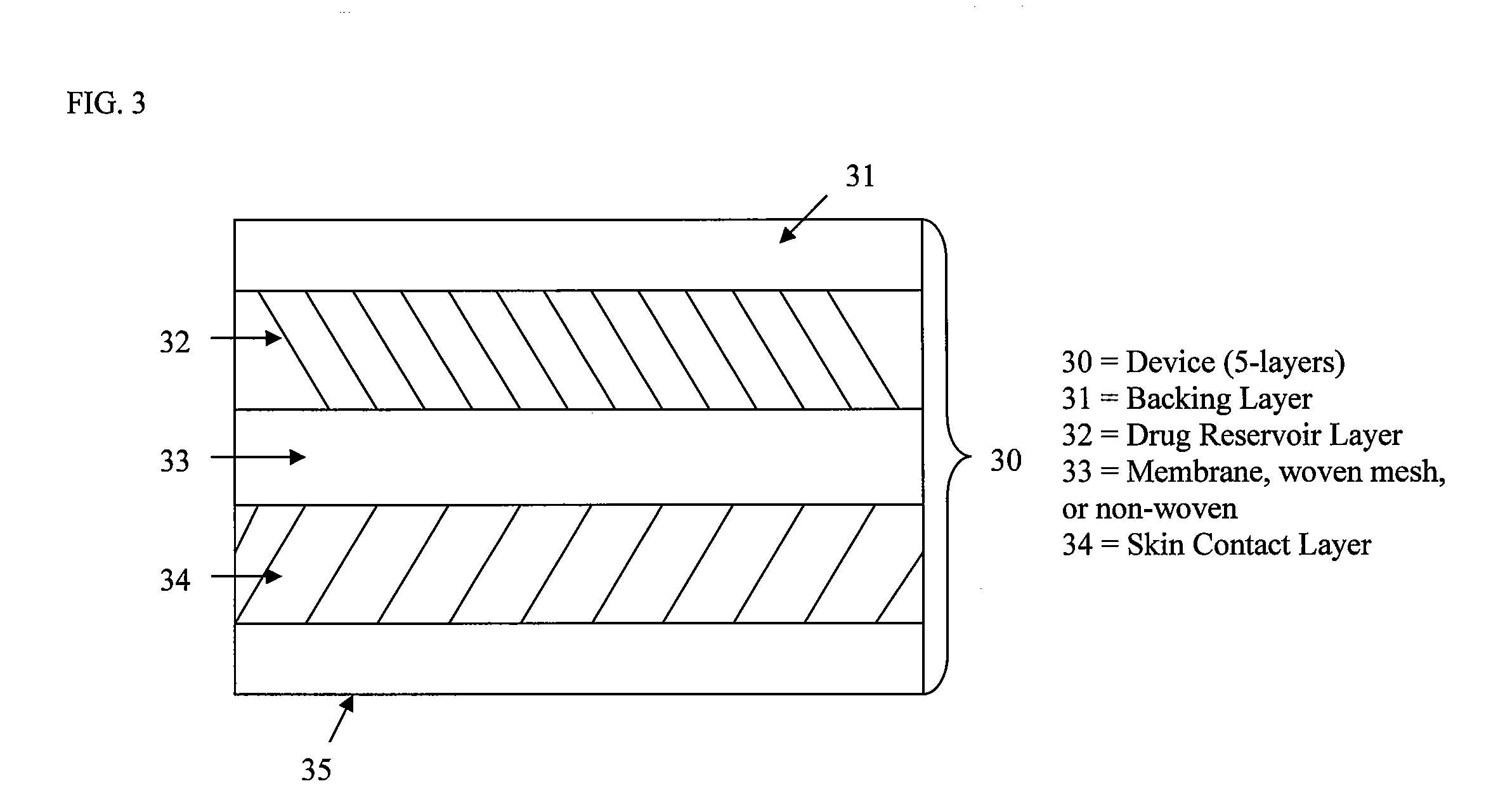Stabilized transdermal drug delivery system
a transdermal drug and stabilization technology, applied in the direction of dressings, bandages, drug compositions, etc., can solve the problems of preventing the delivery of an effective amount of drugs, affecting the stability of drug delivery, and affecting the absorption of hydrophilic salts of drugs, so as to improve the stability and absorption rate of drugs from the skin, and the effect of long-term stability of the therapeutic agen
- Summary
- Abstract
- Description
- Claims
- Application Information
AI Technical Summary
Benefits of technology
Problems solved by technology
Method used
Image
Examples
examples 1 to 9
[0100]Solid dispersion of scopolamine transdermal system containing a stable amorphous form of scopolamine and a polymeric dispersant and stabilizer capable of forming hydrogen bond with scopolamine.
example 1
[0101]To a glass jar Plastone 29 / 32 (12 g) and ethanol (7.56 g) were added. The admixture was mixed with a spatula, heated and sonicated in a water bath at 45° C. until a viscous solution was formed. To the solution was added scopolamine base (4.00 g). The admixture was mixed with a spatula, heated, sonicated and swirled until a clear viscous solution was formed. After the solution was cooled for a while, Dow Corning silicone adhesive 7-4302 (40.82 g, 60% solid) and ethyl acetate (8.34 g) were added. The material was quickly mixed at high shear to provide a cream-like uniform suspension. After air bubbles were removed by rolling overnight, the suspension was coated to a release liner, dried at room temperature for 5 minutes, in an oven set at 40° C. for 5 minutes and in an oven set at 85° C. for 5 minutes to form a thin layer of adhesive on release liner. A backing film Mediflex® 1502 was laminated to the adhesive side. Individual patches were die-cut and pouched. The resulting adhe...
example 10 to 15
[0104]Solid dispersion of natrexone transdermal system containing a stable amorphous form of naltrexone and a polymeric dispersant and stabilizer capable of forming hydrogen bond with naltrexone. The data in Table 2 indicates that naltrexone whose amorphous form has a higher glass transition temperature (79.5° C.) than the glass transition temperature of amorphous scopolamine requires less PVP to disperse and stabilize it. The solid dispersion transdermal systems have higher flux than the crystalline suspension transdermal system example 15.
TABLE 2Solid dispersion naltrexone transdermal system summaryCompletelypresent inIn vitroCompletelydispersedPVP / flux atPresencepresent asAmorphous formEx.scop168 hr.,ofAmorphousin aged sample - 1No.Compositionratioμg / cm2crystalsform time 0?month1015% NTX, 20% PVP,1.3 to 1 488NoYesYes65% silicone 7-43021110% NTX, 10% PVP,1 to 1279NoYesYes80% silicone 7-43011210% NTX, 10% PVP,1 to 11185NoYesYes45% silicone 7-4302,35% dodecanol1315% NTX, 15% PVP,1 ...
PUM
| Property | Measurement | Unit |
|---|---|---|
| Fraction | aaaaa | aaaaa |
| Fraction | aaaaa | aaaaa |
| Fraction | aaaaa | aaaaa |
Abstract
Description
Claims
Application Information
 Login to View More
Login to View More - R&D
- Intellectual Property
- Life Sciences
- Materials
- Tech Scout
- Unparalleled Data Quality
- Higher Quality Content
- 60% Fewer Hallucinations
Browse by: Latest US Patents, China's latest patents, Technical Efficacy Thesaurus, Application Domain, Technology Topic, Popular Technical Reports.
© 2025 PatSnap. All rights reserved.Legal|Privacy policy|Modern Slavery Act Transparency Statement|Sitemap|About US| Contact US: help@patsnap.com



